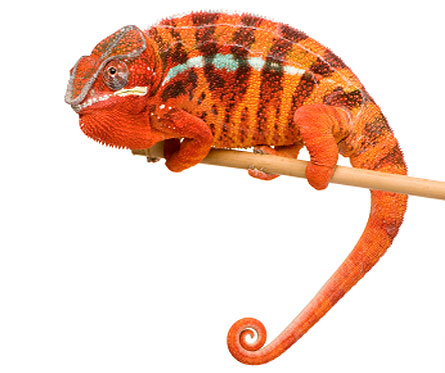- More than 2 years ago
A lounging lizard might not bask just for warmth — it may be getting a much-needed hit of vitamin D. A new study reports that panther chameleons set their sunbathing schedule depending on how much vitamin D they need. The research, published online and in the May/June Physiological and Biochemical Zoology, shows how adept animals are at responding to bodily needs and has implications for how conservation groups, zoos and pet owners care for their reptilian critters, scientists say.

“This provides good evidence that animals will seek ways to regulate,” comments Mark Acierno of Louisiana State University’s School of Veterinary Medicine in Baton Rouge. “It really calls attention to the fact that providing ample opportunity for basking is important.”
Science used to have a more narrow view of basking, says behavioral ecologist Kristopher Karsten of Texas Christian University in Fort Worth, who led the new study. Turtles dozing on logs and still lizards atop sunny rocks were thought to be regulating their body temperature. But scientists have begun investigating ulterior motives for the behavior, which can also leave an animal vulnerable to predators. Regulating levels of vitamin D, a vitamin important for reproductive success in reptiles, may be another reason to sit and sun.
Vitamin D helps the body absorb calcium. Without it, bones may become weak and fracture, or they may soften and deform as with rickets. Many animals get some vitamin D in their diet, but sunlight also plays an important role. Most vertebrates, including lizards, have a precursor to vitamin D in their skin that after several modifications becomes useful vitamin D that can be absorbed by the body. Ultraviolet light is needed for the first chemical step in this process, the conversion of vitamin D precursor to previtamin D.
For two months in the lab, Karsten and his colleagues fed three panther chameleons a diet high in vitamin D (crickets dusted with the vitamin) and fed three others a diet low in vitamin D (crickets with control dust). The team set up outdoor enclosures, each with one or two plum trees for shade and a partially shaded roof, so the animals would have a variety of temperatures and levels of sun to choose from. Then the researchers tracked how often and where the chameleons lounged, recording the levels of UV light in those areas.
The chameleons that had the low–vitamin-D diet spent more time basking in the sun than their counterparts, the researchers report. Not only that, but the levels of UV exposure all the chameleons sought also fell within the range of vitamin D that has been found in healthy, breeding lizards. This suggests the chameleons have a pretty finely tuned mechanism of regulation, Karsten says.
Acierno notes that the sample size of the study was small, but he says that Karsten and his colleagues have been doing very thorough work in this area for years. “This is a very elegant design and very well done,” Acierno says. He hopes the work will lead to improved care for reptiles. Providing shade and protection from UV light is very important, he says. But animals in a reptile house or indoor aquarium may need their day in the sun.






